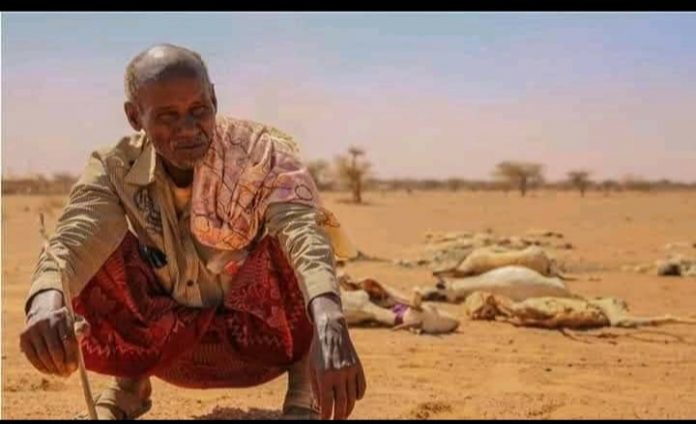In Somalia, 5.4 million people were affected by drought to the extent of needing emergency in the form of food aid. After two seasons of consecutive poor rainfall, a drought occurred. The GU rains that occur between April and June, and the Deyr season that comes between October and December failed. Its impact on agricultural production was lower livestock productivity. Pastoral communities faced acute food insecurity. Malnutrition and displacement of drought are increasing Food aid greatly declined, especially during 2020, because of Covid-19 Despite the $700 million drought response plan less than 40% has been implemented.
The regions that were most affected included Jubaland state, Southwest state, and some parts of Puntland state.
Somalia has been affected by droughts severely for myriads of decades. The area experiences severe droughts. Annual rainfall is averaging 200 to 300mm. The average temperature is between 28o and 30oThese two conditions have caused the area to experience a water shortage. Approximate 70% of the residents are farmers (The crops they grow are mostly subsistent. Agriculture production relied on surface water, especially river water, for Irrigation. ) The shortage of water has extremely affected farming. Extreme droughts have paralyzed agriculture production. Recurrent drought, food insecurity and famine water scarcity become a devastating reality in Somalia in recent decades.
Since the end of the 2011 famine that the effects of the continuing drought will continue into 2022 and it will cause conflict, displacement.
Causes of drought in Somalia.
Drought mainly caused climate change, which is climatic variables rainfall and temperature. Marginalization lack of planning
The main area of drought occurs in Somalia is the area of the river basin that is common for the total production of the country. The canals are poor.
Water and land temperatures cause drought as heating increases the evaporation of water bodies. Soil and crops demand water, but this demand supersedes precipitation received in an area or region.
Another cause of draught is weather patterns and air circulation. To explain this, the examples of ELNino or LAnino have been identified to be the cause of the drought. Especially in punt land state.
Drought in Somalia can also be caused by a lack of water. Somalia mainly has two seasons and unfortunately, they are in 6months of flood issues and 6 months in drought issues that mainly affected agricultural production and livestock This is a result of the world’s fast-rising population, which causes demand for water to outstrip availability. Water timing differs from agricultural seasons in that when people require more water, they receive less, and when they require less, they receive more precipitation.
Drought mitigation
Dams and drills should be constructed across the river(s) whose waters are used during drought, early warning. The community always should be cautioned earlier of the possibility of droughts occurring, Land and water management, Building infrastructure in preparation for drought.
Somalia has been affected by droughts severely for myriads of decades It causes a myriad of factors such as poor canals, climatic factors, lack of veterans in water and land, lack of social awareness
Drought can be managed by improving natural resources, water harvesting during the rainy season, setting policy and regulation, building boreholes.
-BY HANI HUSSEIN WARSAME.

